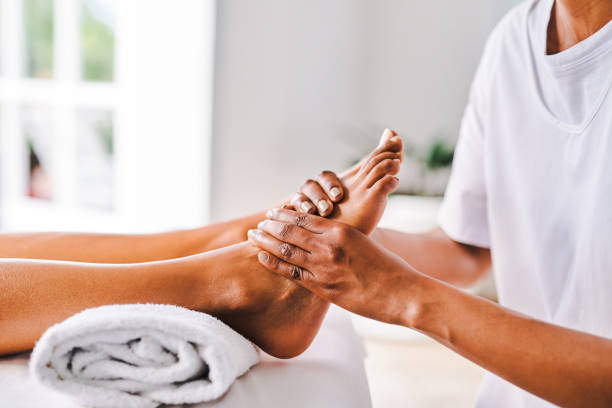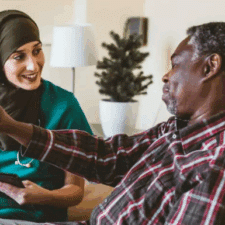
Reflexology massages have become a great way to help people with many underline illnesses that plagued their bodies. So it is no surprise that a massage focusing on specific pressure points can help your asthma.
As counterintuitive as it may seem, a simple foot rub can decrease some of your worst symptoms and help you get through a rough day. Read on as we go over why reflexology massages are so helpful and where the best pressure points are for extraordinary relief.
How Reflexology Foot Rubs Help Your Asthma
Reflexology is the art of using pressure points to heal your aching body. It might hurt initially, but you'll feel the relieving effects afterward. Reflexology takes advantage of the interconnecting tissues of the human body, which can heal distant parts if someone applies the right amount of pressure.
Those living with asthma would benefit from a massage from a reflexology expert because there are specific points in the feet that can ease the symptoms. Some studies have found significant improvement between groups who receive olive oil foot massages.
While further study is needed to see the full effect reflexology can have on asthma symptoms, there is no denying that the soothing massage can relieve someone with symptoms.
Scientists still don't know how these massages compare to traditional medicine, such as bronchodilators or corticosteroids.
While these methods of dealing with asthma are tried-and-true, the relaxing effects of that magical foot massage employ the body's internal painkillers to soothe symptoms.
Although this lacks the proper scientific backing, it has been reported that reflexology has an uncanny ability to help people cope with stress. There’s something about massaging the balls of your feet that make people feel at ease.
RELATED: Out of Ibuprofen? Use Your Pressure Points for Pain Relief
How to Properly Give a Reflexology Foot Rub?
Speaking of the balls of your feet, they are the best place to start when initiating a reflexology foot massage to help with asthma symptoms. Focus on the area that is between the second-to-last toe and the pinky toe.
1. Start With The Pinky Toe
It is best to support the foot with your opposite hand, so you can really dig into the muscles and work the technique correctly. When massaging the area, use your thumb. The space between the prominent toe and the second toe is often referred to as the diaphragm line.
2. Thumb Walk
Walk your thumb along the ball of the foot, applying just enough pressure to relax the patient. Circular motion is unnecessary for this type of massage as that is more for soothing muscles.
It is best to use your thumb pad, not your knuckle, which could be painful, or the longer part of your finger as that is too broad.
RELATED: Foot Detox: Healing Or Just Hype?
3. Implement Calming Breaths
Controlling your breathing is a significant part of reflexology massages and can help you manage your asthma-related symptoms easily. While someone is working on your pressure points, you can gently let breaths in and out of your body.
Your feet harbor a lot of stress, so diaphragmatic breathing can help you channel that stress upward and out of your body through your nose and mouth, like yoga. Receiving a massage on the balls of your feet as you breathe in and out can aid you with trouble breathing and stress.
4. Introduce Relaxing Oils
Using oils can significantly improve the quality of reflexology foot massage by reducing friction and adding a soothing aroma. Relaxation is one of the best methods for strengthening steady breathing and reducing inflammation-causing stress.
Some of the best oils you can use are those that give off mint or eucalyptus fragrances. Not only do they have a pleasant smell, but they also help clear up congested noses and open airways.








